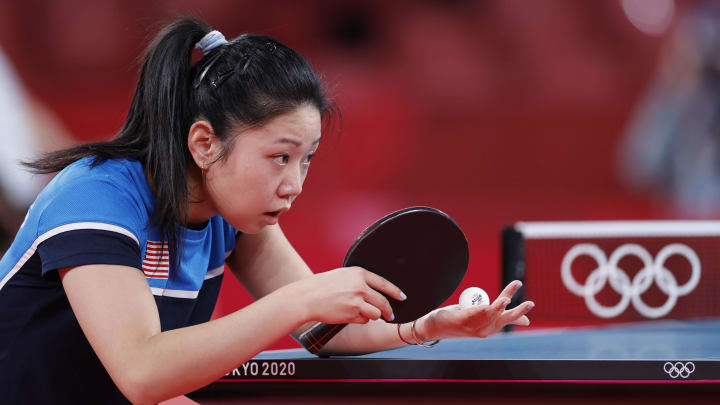What Are Olympic Table Tennis Rules? Breaking Down Everything to Know For Paris 2024

The summer Olympics have arrived, and you know what that means—table tennis at the absolute highest level! Whether you're an enjoyer of Forrest Gump, Balls of Fury, or merely grew up with an easily accessible ping-pong table there are myriad reasons to get excited to watch table tennis at the Paris Games.
Of course, the rules are a little different for the Olympics than in Grandpa's garage playing a family tournament at Thanksgiving. The basics are familiar, insofar as the objective of the game is to defeat the opponent by earning points in a manner quite like tennis. But the particulars are where Olympic table tennis diverges from the games that take place in Bryant Park.
Here we endeavor to inform you of those differences and paint a full picture of what table tennis will look like at the 2024 Paris Olympics.
Olympic Table Tennis Rules
Equipment
Visually, Olympic table tennis is not all that dissimilar from standard ping-pong. Games are played on a rectangular table, split into two halves by a short net that checks in at 15.25 centimeters, per Olympic regulations. The paddle is more commonly referred to as a "racquet" in international play and boasts two rubber sides— one black and one red.
The ball itself will either be orange or white with a weight of 2.7 grams and a diameter of 40 millimeters.
Who goes first?
To determine who goes first, table tennis turns to a classic—an old-fashioned toin coss.
The umpire will flip a coin and the winner will get to choose whether they'd like to serve first, receive first, or choose a side of the table, at which point the decision to serve or receive will fall on the loser of the coin toss.
Serves
Once the order of operations is determined by the coin toss, the game will get underway by one player serving to the other. But there are rules in place to prevent any sort of trickery from occurring on the serve.
According to the Olympics website, "The server has to hold the ball with an open palm, toss it up and strike it in a manner that the ball bounces first on the server’s side of the table before bouncing over the net to the other side." In singles, the server is permitted to hit the ball to any part of the table. In doubles, though, all serves must go diagonally across the table.
Then, on returns, a player must wait until the ball is bounced to hit it with a paddle. If they hit it while still in the air, a foul is called.
How to score points
The ultimate objective is for one player to reach the target score quicker than the other. In order to do that, points must be scored.
A point is scored in two different ways. The first way for a player to score a point is to hit the ball to an area where the opponent cannot return it. Doing so will earn the hitting player a point, so long as the ball legally bounces off the table on the side of the opponent first.
A point is also scored if an opponent hits the ball into the net or misses the table entirely. In that scenario the receiving player, not the hitting player, gets a point for their opponent's miscue.
How to win
In order to win a match of Olympic table tennis, one player must reach 11 points before the other. In an instance where the score is tied, 10-10, the first player to reach 11 will not win. Instead, the winner will be the first player to go up by two points.
But one win does not secure a full Olympic victory. In singles, table tennis games are usually best-of-seven matches. So the first player to get to 11 points (or win by two) four times will be declared winner of the game.
Highlights
The best way to fully understand the concepts above is to see them in action. Thus, we present a 10-minute highlight compilation of Olympic table tennis.
You are now fully prepared to enjoy Olympic table tennis.
